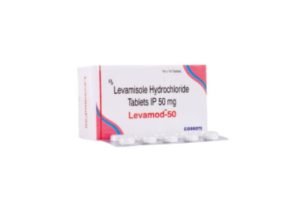
Teicoplanin Overview
Teicoplanin is a glycopeptide antibiotic used to treat serious infections caused by gram-positive bacteria, particularly those resistant to other antibiotics like methicillin-resistant Staphylococcus aureus (MRSA). Teicoplanin works by inhibiting bacterial cell wall synthesis, making it bactericidal against susceptible organisms. It is closely related to vancomycin but offers the advantage of once-daily dosing due to its longer half-life.
Brand Names and Formulations
Teicoplanin is available under various brand names, including:
- Targocid
- Ticocin
Common formulations and strengths:
- Injectable Powder: 200 mg and 400 mg vials for intravenous (IV) or intramuscular (IM) administration.
Uses/Indications
Teicoplanin is primarily used to treat serious infections caused by gram-positive bacteria, especially when these are resistant to other antibiotics. Common indications include:
- Methicillin-resistant Staphylococcus aureus (MRSA):
- Used to treat infections caused by MRSA, including pneumonia, endocarditis, and osteomyelitis.
- Gram-positive Sepsis:
- Treats bloodstream infections caused by gram-positive organisms like Staphylococcus and Enterococcus species.
- Skin and Soft Tissue Infections:
- Effective in treating serious skin infections, including cellulitis and wound infections.
- Bone and Joint Infections:
- Used for osteomyelitis and septic arthritis caused by gram-positive organisms.
- Infective Endocarditis:
- Often used in combination with other antibiotics to treat endocarditis caused by Staphylococcus or Enterococcus species.
- Peritonitis:
- In dialysis patients, teicoplanin can be used to treat peritonitis caused by gram-positive organisms.
- Other Gram-positive Infections:
- Also used in infections like streptococcal infections, Enterococcus infections, and pneumococcal infections when penicillin resistance is suspected.
Dosage
- Adults:
- Loading Dose: 400 mg IV or IM every 12 hours for 3 doses (to reach therapeutic levels quickly).
- Maintenance Dose: 400 mg IV or IM once daily. For severe infections, higher doses may be required (e.g., 12 mg/kg/day).
- Pediatric Dosing:
- 6-10 mg/kg every 12 hours for 3 doses (loading), followed by 6-10 mg/kg once daily (maintenance).
- Renal Impairment:
- Dose adjustment is necessary for patients with moderate to severe renal impairment.
Side Effects
Teicoplanin is generally well-tolerated but can cause some side effects:
- Allergic Reactions:
- Rash, pruritus, and, in rare cases, anaphylaxis.
- Red Man Syndrome:
- A hypersensitivity reaction similar to that seen with vancomycin, but less frequent. Symptoms include flushing, rash, and hypotension.
- Ototoxicity:
- Although less common than with vancomycin, teicoplanin can cause hearing loss, especially in patients with pre-existing renal impairment or prolonged treatment.
- Nephrotoxicity:
- While teicoplanin is considered less nephrotoxic than vancomycin, kidney function should be monitored, particularly in patients with pre-existing renal disease.
- Hematological Effects:
- Thrombocytopenia, neutropenia, and eosinophilia have been reported with long-term use.
- Injection Site Reactions:
- Pain, swelling, and redness at the site of injection, especially with intramuscular use.
Contraindications
Teicoplanin is contraindicated in:
- Hypersensitivity:
- Allergy to teicoplanin or other glycopeptides.
- Severe Renal Impairment Without Monitoring:
- Caution is needed in patients with severe renal disease, and dose adjustments are required.
Drug Interactions
- Aminoglycosides:
- Co-administration with aminoglycosides (e.g., gentamicin) increases the risk of nephrotoxicity and ototoxicity, so kidney and hearing function should be monitored closely.
- Loop Diuretics:
- Combining teicoplanin with loop diuretics (e.g., furosemide) can enhance the risk of ototoxicity, especially in patients with renal impairment.
- Vancomycin:
- Co-administration of teicoplanin and vancomycin is generally avoided due to the potential for increased toxicity.
- Other Nephrotoxic Drugs:
- Use with caution with other nephrotoxic agents (e.g., NSAIDs, contrast agents) due to the increased risk of kidney damage.
Special Considerations
- Renal Function:
- Teicoplanin is primarily excreted by the kidneys, so dose adjustments are necessary in patients with renal impairment. Close monitoring of kidney function is advised, particularly in patients receiving long-term treatment.
- Therapeutic Drug Monitoring:
- Serum levels of teicoplanin should be monitored in severe infections or prolonged therapy to ensure adequate drug levels and avoid toxicity.
- Pregnancy and Lactation:
- Pregnancy Category C: Teicoplanin should only be used during pregnancy if clearly needed. There is limited data on its use in pregnant women.
- Breastfeeding: It is unknown whether teicoplanin is excreted in breast milk, so caution should be exercised in nursing mothers.
- Cross-reactivity with Vancomycin:
- While teicoplanin is less allergenic than vancomycin, patients who have had severe reactions to vancomycin may also react to teicoplanin, though this is rare.
Conclusion
Teicoplanin is a valuable antibiotic in the treatment of serious infections caused by resistant gram-positive bacteria, particularly MRSA. It offers advantages over vancomycin due to its less frequent dosing schedule, lower risk of nephrotoxicity, and reduced incidence of infusion-related reactions. However, its use should be reserved for serious infections, with close monitoring of kidney function and possible therapeutic drug monitoring to optimize efficacy and minimize toxicity.







